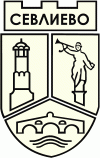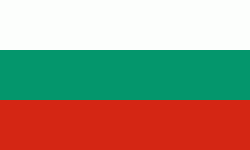Sevlievo (Obshtina Sevlievo)
 |
In 2009, the population of the town was 24,065.
The earliest traces of occupation in the region date back to the late Neolithic period (around the 8th century BC). Some Thracian tombs still survive. Hotalich Fortress is the last medieval town. It had been inhabited for more than 1,000 years and functioned as an important defensive center. Hotalich existed for centuries together with the settlement on the site of the contemporary town, known as Servi and Selvi. In the middle of the 19th century, the development of crafts led to the concentration of large sums of money in the crafts' societies. Commercial trips across the Ottoman Empire, Europe and Russia enriched general knowledge.
In 1834 St Prophet Eliah Church was restored and in 1836 the medieval Batoshevo Monastery was rebuilt. In the mid-1850s, Kolyu Ficheto, a prominent master of the Bulgarian National Revival period, built the stone bridge over the Rositsa River. In 1844 the famous wealthy craftsman and merchant, Hadzhi Stoyan Nikolov, invested his own money in the building of a huge school.
In 1870, under the direct guidance of Vasil Levski, known as the "Apostle of Freedom", a revolutionary committee was created. It prepared the population of Sevlievo for the April Uprising in 1876. The Bulgarians from this region took an active part in the uprising.
Ottoman occupation of the town ended 2 July 1877. As a major cultural institute, the local community center has existed for 127 years. The Mara Belcheva House of Culture became the new center of cultural events.
Map - Sevlievo (Obshtina Sevlievo)
Map
Country - Bulgaria
 |
 |
| Flag of Bulgaria | |
One of the earliest societies in the lands of modern-day Bulgaria was the Neolithic Karanovo culture, which dates back to 6,500 BC. In the 6th to 3rd century BC the region was a battleground for ancient Thracians, Persians, Celts and Macedonians; stability came when the Roman Empire conquered the region in AD 45. After the Roman state splintered, tribal invasions in the region resumed. Around the 6th century, these territories were settled by the early Slavs. The Bulgars, led by Asparuh, attacked from the lands of Old Great Bulgaria and permanently invaded the Balkans in the late 7th century. They established the First Bulgarian Empire, victoriously recognised by treaty in 681 AD by the Eastern Roman Empire. It dominated most of the Balkans and significantly influenced Slavic cultures by developing the Cyrillic script. The First Bulgarian Empire lasted until the early 11th century, when Byzantine emperor Basil II conquered and dismantled it. A successful Bulgarian revolt in 1185 established a Second Bulgarian Empire, which reached its apex under Ivan Asen II (1218–1241). After numerous exhausting wars and feudal strife, the empire disintegrated and in 1396 fell under Ottoman rule for nearly five centuries.
Currency / Language
| ISO | Currency | Symbol | Significant figures |
|---|---|---|---|
| BGN | Bulgarian lev | лв | 2 |
| ISO | Language |
|---|---|
| BG | Bulgarian language |
| TR | Turkish language |















